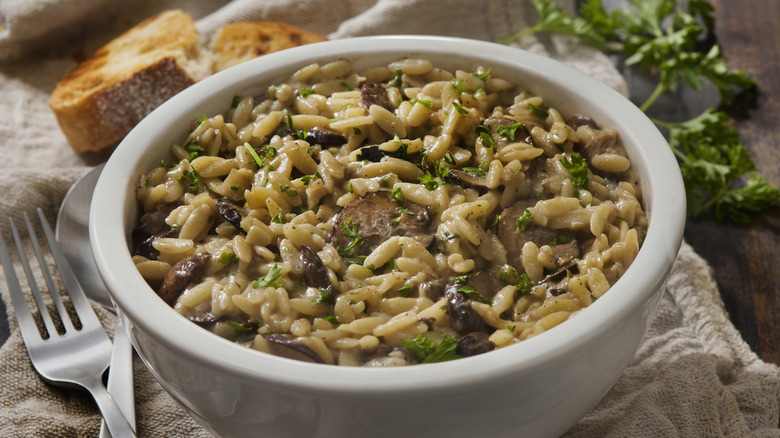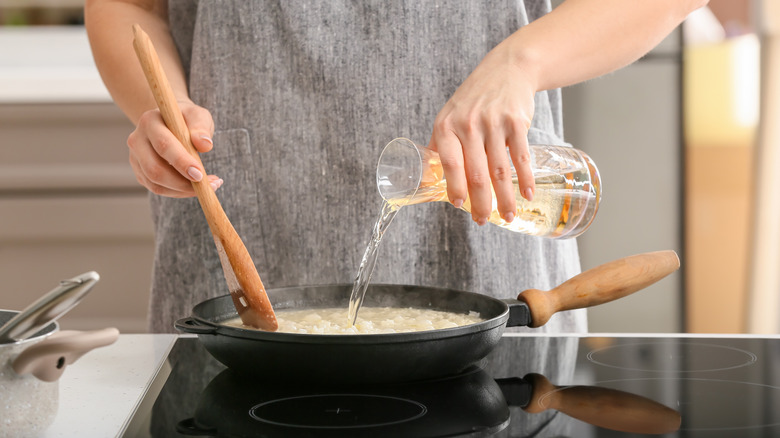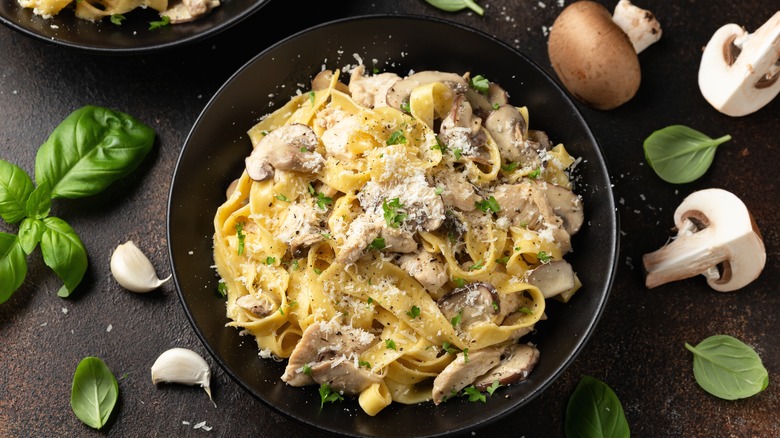Cook Pasta Risotto-Style For The Creamiest Result
Pasta is a staple comfort food for many, and a generally easy way to whip up a filling meal that can be taken in all sorts of delicious directions. Although underneath the deceptively simple dish lies countless strong pasta opinions and dozens of secret tips for making perfect pasta — you can get the job done by just putting your noodles in boiling water for the allotted time. Most likely, it'll be quite good.
But there's a way to make it great: creamy, rich, flavorful, incredibly simple greatness. You won't need flashy ingredients or complex recipes — you'll only need to adjust your cooking method by turning to another classic Italian dish: risotto.
In the most basic terms, risotto is traditionally made by slowly adding stock to toasted arborio rice. As the rice absorbs the stock and releases starch, it becomes luxuriously creamy and rich in flavor. The same will happen to risotto-style pasta, and the result will be intensely flavorful and velvety without the need for a heavy, cream-based sauce.
Pasta worth the time and attention
The boiling method for cooking pasta is pretty hands-off, but risotto-style is going to require more of your attention and a few more steps. You'll have to start by choosing your pasta shape, but luckily, this won't be much of a challenge. This method can be used with any dried pasta type — even spaghetti if you break it into pieces.
The crucial first step will be toasting the pasta in a little bit of oil, which brings out a slightly nutty flavor, helps prevent breakage, and locks in the starch so that it's released evenly during cooking. As with risotto, you won't be setting a timer for the pasta cooking time. Instead, you'll heat the stock in a separate pot, then ladle it onto your pasta gradually, allowing the pasta to absorb each addition of liquid. With about 8 ounces of dried pasta to about 3 cups of liquid, the process will typically take around 20 minutes. Make sure that your stock stays hot throughout to maintain a consistent cooking temperature, then stir as you go to ensure that the pasta absorbs the stock evenly.
The starch released during this method contributes to the final, essential step of the process — "mantecare." It's an Italian word without an exact English translation, but it refers to a creaming technique in cooking. For risotto, or pasta cooked risotto-style, it will mean mixing in butter, cream, or cheese to the finished starch-rich dish to get that dreamy creaminess you're looking for.
Take pasta up a notch
Because risotto-style pasta is lavish and creamy to begin with, the best additions to it are not usually going to be typical sauces that are thick already. Instead, once the "mantecare" is complete, let the dish stand on its own with simple enhancements. The classic "aglio e olio," with just oil, garlic, and red pepper flakes, adds a kick without distracting from the pasta or overwhelming the palate. Wilted greens alone offer a hint of fresh flavor.
You can also turn to beloved risotto recipes for pasta inspiration. A classic porcini mushroom risotto preparation gives the dish a little earthiness and won't add much work for you. If you really want to elevate it, opt instead for a seared scallop and basil risotto preparation. With risotto-style pasta being so simple and flavorful, the sky's the limit when it comes to adding ingredients — as long as you let your pasta be the star of the show.


